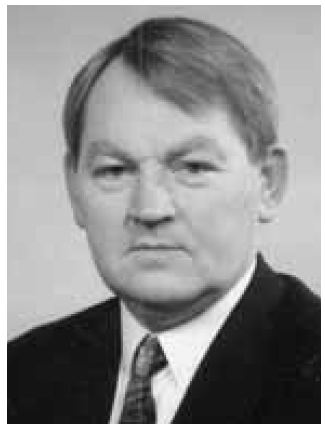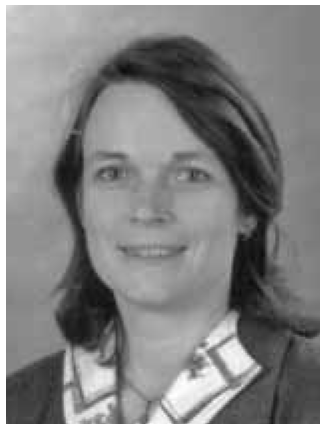Gefügeentwicklung durch Wärmebehandlung an Magnesiumlötverbindungen
-
Bernhard Wielage
Univ.-Prof. Dr.-Ing. habil. Bernd Wielage born 1946; studied engineering/materials science at TU Hannover; graduated at the University of Dortmund; since 1994 professorship for „composites“ at Chemnitz University of Technology; subjects: composites, thermal spraying, brazing and coatingDr.-Ing. Silke Mücklich born 1964; studied Metalphysics at the Bergakademie Freiberg; graduated at Chemnitz University of Technology; main subjects of her studies, amongst others, light metals, composites and joining
Kurzfassung
Lötverbindungen mit Zn-Mg-Al-Loten an Magnesiumgrundwerkstoffen bilden in Abhängigkeit vom Grundwerkstoff und von der eingesetzten Lotlegierung sehr unterschiedliche Gefüge aus. Wie bereits in [1] beschrieben, kommt es bei Einsatz binärer Mg-Zn-Lote zu der Beobachtung, dass das Lot bedingt durch die beschleunigte Abkühlung während des Lötvorganges kein feinlamellares eutektisches Gefüge ausbildet, sondern in einem Gemisch mikrokristalliner, intermetallischer Phasen erstarrt. Da sich diese Morphologie negativ auf die mechanischen Eigenschaften auswirkt, wird versucht, durch eine nachgeschaltete Wärmebehandlung eine günstigere Gefügeausbildung zu erzielen.
Abstract
Soldered joints using Zn-Mg-Al filler metal on magnesium matrix materials form very different microstructures which depend on the matrix material and the filler alloy employed. As described in [1] already, the observation made in using binary Mg-Zn filler metals is that the filler metal does not form a finely lamellar eutectic microstructure during the soldering process because of accelerated cooling, but solidifies into a mix of microcrystalline, intermetallic phases. Since this morphology has an adverse effect on mechanical properties attempts are made to bring about a favorable microstructure formation by a succeeding thermal treatment.
About the authors

Univ.-Prof. Dr.-Ing. habil. Bernd Wielage born 1946; studied engineering/materials science at TU Hannover; graduated at the University of Dortmund; since 1994 professorship for „composites“ at Chemnitz University of Technology; subjects: composites, thermal spraying, brazing and coating

Dr.-Ing. Silke Mücklich born 1964; studied Metalphysics at the Bergakademie Freiberg; graduated at Chemnitz University of Technology; main subjects of her studies, amongst others, light metals, composites and joining
-
Translation: J. Fritsche
-
HEITERE METALLOGRAPHIE / HUMOROUS METALLOGRAPHY
So laufe ich im Labor herum/
That’s how I’m running around in our lab

REM-Aufnahme (ungeätzte Probe) einer Fehlstelle im Kupfer
Senguel Karasahin,
Atotech Deutschland GmbH, Berlin
Literatur/References
[1] Wielage, B.; Mücklich, S.: Einfluss der Lotzusammensetzung auf die Gefügeentwicklung in Magnesium-Lötverbindungen. Prakt. Metallogr. 42 (2005) 10, 513-52710.3139/147.100281Search in Google Scholar
[2] Müller, W.; Müller, J.-U.: Löttechnik – Leitfaden für die Praxis. Deutscher Verlag für Schweißtechnik DVS-Verlag GmbH. Düsseldorf. 1995Search in Google Scholar
[3] Petrunin, I.E.: Handbuch Löttechnik. Berlin: Verl. Technik, 1991Search in Google Scholar
[4] Shapiro, A.E.: Brazing Magnesium Alloys and Magnesium Matrix Composites. Welding Journal (2005) 10, 33-43Search in Google Scholar
[5] Wielage, B.; Mücklich, S.: Beitrag zum Löten von Magnesiumwerkstoffen, Prakt. Metallogr. 40 (2003) 5, 232-24110.1515/pm-2003-400504Search in Google Scholar
© 2007 Carl Hanser Verlag, München
Articles in the same Issue
- Contents
- Gefügeentwicklung durch Wärmebehandlung an Magnesiumlötverbindungen
- Einfluss von thermomechanischer Behandlung auf die Mikrostruktur von pseudoelastischem NiTi am Beispiel von Komponenten für Brillengestelle
- TEM Study of Bainitic Low-Carbon HSLA Steel: The Orientation Relationships of Cementite
Articles in the same Issue
- Contents
- Gefügeentwicklung durch Wärmebehandlung an Magnesiumlötverbindungen
- Einfluss von thermomechanischer Behandlung auf die Mikrostruktur von pseudoelastischem NiTi am Beispiel von Komponenten für Brillengestelle
- TEM Study of Bainitic Low-Carbon HSLA Steel: The Orientation Relationships of Cementite

